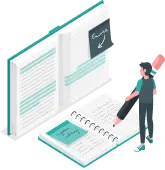Name
Capella University
FPX6410
Instructor’s Name
October 02, 2024
Table of Contents
ToggleAdministrative Executive Summary
Organizations in the healthcare sector use Health Information Technology (HIT) to endeavor in the handling and documentation of patient information. Informatics plays the circle of effective communication of patients with their caregivers and enables individuals to disclose crucial information about influencing their care plans (Oner et al., 2021). In most cases, the process of therapy requires the interchange of information among various healthcare providers, to provide a comprehensive approach to a patient’s treatment. Patients and providers can retrieve vast quantities of data and statistical literature; valuable efforts for recursive, improved relationships and diagnoses. By establishing the communication between patient and provider and enhancing it with the clinical knowledge, patient care outcomes improve known to give importance to communication in healthcare.
Strategic Outcomes through Informatics Model Solution
Nursing informatics technology is integrated into healthcare practice and serves to support diagnosis, the development of care plans, drug dispensing, and patient counseling. They offer significant statistical information to the healthcare providers they serve to help them understand the needs of the patients they serve (Mrayyan et al., 2023). Advanced organizations in the health sector today which comprises biotechnology companies with advanced technologies can be able to contain large volumes of patient’s sensitive information and ensure that they do not compromise the information. Health informatics systems also lead to improvement in communication between clinical staff, patients, and their families; therefore acting as sources for overcoming barriers to care. Incorporation of such technology not only simplifies the process of delivering and managing health care but also enhances the teamwork culture aimed at patient care.
Researched Theory Or Models To Effect Change
It is the healthcare informaticists’ task to ensure that they diagnose their patients and other vulnerable persons to prevent any diseases. They educate patients on taking medication on time, arranging for other specialists, and healthcare facilities to stick to some information laws and regulations (Gajwani et al., 2023). Through the use of many different categories of measurable information, healthcare organizations can increase the efficiency and effectiveness of functioning and at the same time provide physicians, nurses, administrators, and all other personnel in health systems. Those nurses who demonstrate clinical experience paired with an interest in and proficiency in applying technology in their work are in pursuit of new approaches to improving clinical care through data management and process optimization. Apart from doing this, it also boosts healthcare outcomes and therefore the quality of healthcare services provided to the people.
Standards of Practice
Nursing informatics can help nurses employ the best HIT practices depending on the software technologies. Experts can use nursing informatics expertise to:
- Develop application software and databases that will be very useful for the nurses.
- Ensure compliance of EHR to conventional structures of data storing and analyzing and managing structures in healthcare.
- They should take advantage of the given data to assess and analyze to improve the nursing procedures.
- enhancing the communication between IT and healthcare individuals
- Apply provisions of privacy regulations that are contained in laws and regulations
- Educationally, clinicians should be taught how to use equipment that concerns the storage and management of electronic health records (Lánczky et al., 2021).
Regulatory Information Impacts The Use Of Health Information Technology
Healthcare services are best when delivered in collaboration with other professionals including nurses who participate effectively in interprofessional relations and especially in the integration of health information technology (Sittig et al., 2020). According to the ACA, HIT is necessary for partial purposes of transparency, efficient operations, engaging patients, and having data towards operating healthcare delivery as well as costs within the United States. HIT can change the system of care delivery into a more efficient one in its present form with its vast aspects.
Through an update of the health information platform, healthcare providers can often retrieve the health information and closely document a patient’s diathesis. Nevertheless, HIT promotes the advancement and deployment of new solutions this fact illustrates the need for relevant administrative and legislative modifications (Graf et al., 2020). Such an outlook is in line with the huge potential that HIT has to offer regarding improving the quality of patient care and overall system outcomes. Through proper implementation of HIT, nurses and other clinicians will be able to join in making healthcare delivery systems more suitable to the patient’s needs.
The Importance Of Creating A HIPAA-Compliant Spreadsheet
HIPAA is an essential attribute of the legal compliance program aiming at achieving compliance with the legal requirements as well as the protection of medical information. Many healthcare facilities such as hospitals, insurance companies, and suppliers are bound by the HIPAA compliance checklist demanded to ensure that the privacy of patients is not compromised (Afaneh et al., 2021). Spreadsheets are efficient for the storage of essential health data in that it is stored at one location that everybody has access to. As long as their usage is correct, spreadsheets should not violate the norms set by HIPAA and protect personal information.
NURS FPX 6410 Assessment 2 Conclusion
To help patients, physicians, and other healthcare professionals, health informatics relies heavily on data collection, storage, organization, and analysis. Legislation such as HIPAA and the Affordable Care Act (ACA) establishes boundaries that limit data access, ensuring confidentiality and data integrity (McBride et al., 2023). Nursing informatics and advancements in health information technology provide medical practitioners with valuable tools for quickly analyzing and evaluating data, leading to improved patient care. These elements empower medical staff, particularly nurses, to perform their roles effectively while enhancing patient health outcomes through efficient and effective care. Ultimately, this fulfills the purpose of nursing informatics.
NURS FPX 6410 Assessment 2 References
Afaneh, T., Abu-Moghli, F., & Ahmad, M. (2021). Nursing-sensitive indicators: a concept analysis. Nursing Management (Harrow, London, England: 1994), 28(3), 28–33. https://doi.org/10.7748/nm.2021.e1982
Graf, A. C., Jacob, E., Twigg, D., & Nattabi, B. (2020). Contemporary nursing graduates’ transition to practice: A critical review of transition models. Journal of Clinical Nursing, 29(15-16), 3097–3107. https://doi.org/10.1111/jocn.15234
Gajwani, A., Shah, A., Patil, R., Gucer, D., & Osier, N. (2023). Training undergraduate students in HIPAA compliance. Accountability in Research, 30(7), 530–541. https://doi.org/10.1080/08989621.2022.2037428
Lánczky, A., & Győrffy, B. (2021). Web-Based Survival Analysis Tool Tailored for Medical Research (KMplot): Development and Implementation. Journal of Medical Internet Research, 23(7), e27633. https://doi.org/10.2196/27633
McBride, S., Alexander, G. L., Baernholdt, M., Vugrin, M., & Epstein, B. (2023). Scoping review: Positive and negative impact of technology on clinicians. Nursing Outlook, 71(2), 101918. https://doi.org/10.1016/j.outlook.2023.101918
Mrayyan, M. T., Abunab, H. Y., Abu Khait, A., Rababa, M. J., Al-Rawashdeh, S., Algunmeeyn, A., & Abu Saraya, A. (2023). Competency in nursing practice: A concept analysis. BMJ open, 13(6), e067352. https://doi.org/10.1136/bmjopen-2022-067352
Oner, B., Zengul, F. D., Oner, N., Ivankova, N. V., Karadag, A., & Patrician, P. A. (2021). Nursing-sensitive indicators for nursing care: A systematic review (1997-2017). Nursing Open, 8(3), 1005–1022. https://doi.org/10.1002/nop2.654
Sittig, D. F., Wright, A., Coiera, E., Magrabi, F., Ratwani, R., Bates, D. W., & Singh, H. (2020). Current challenges in health information technology-related patient safety. Health Informatics Journal, 26(1), 181–189. https://doi.org/10.1177/1460458218814893








